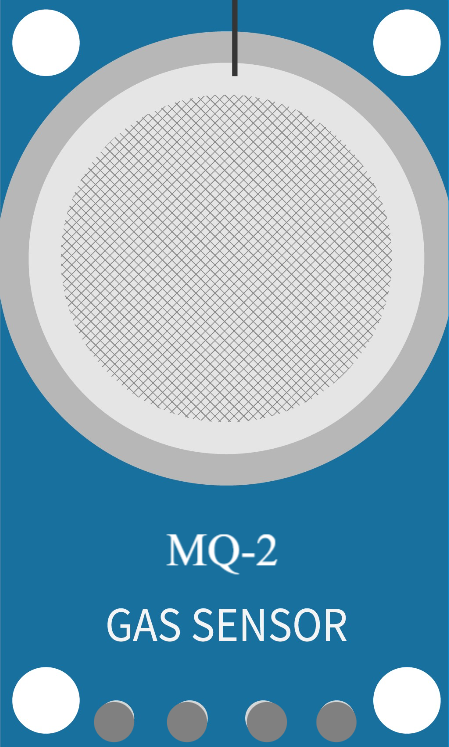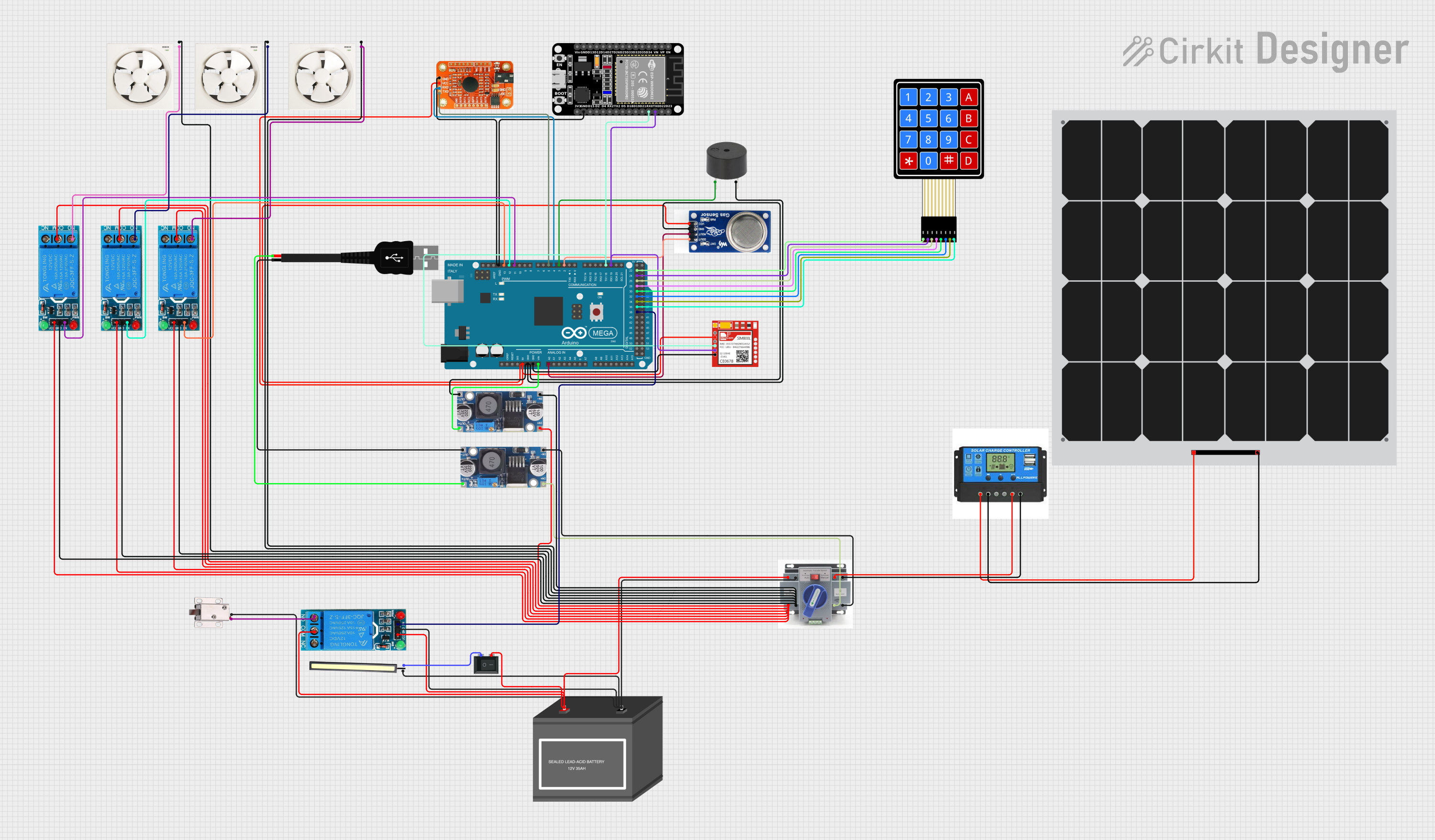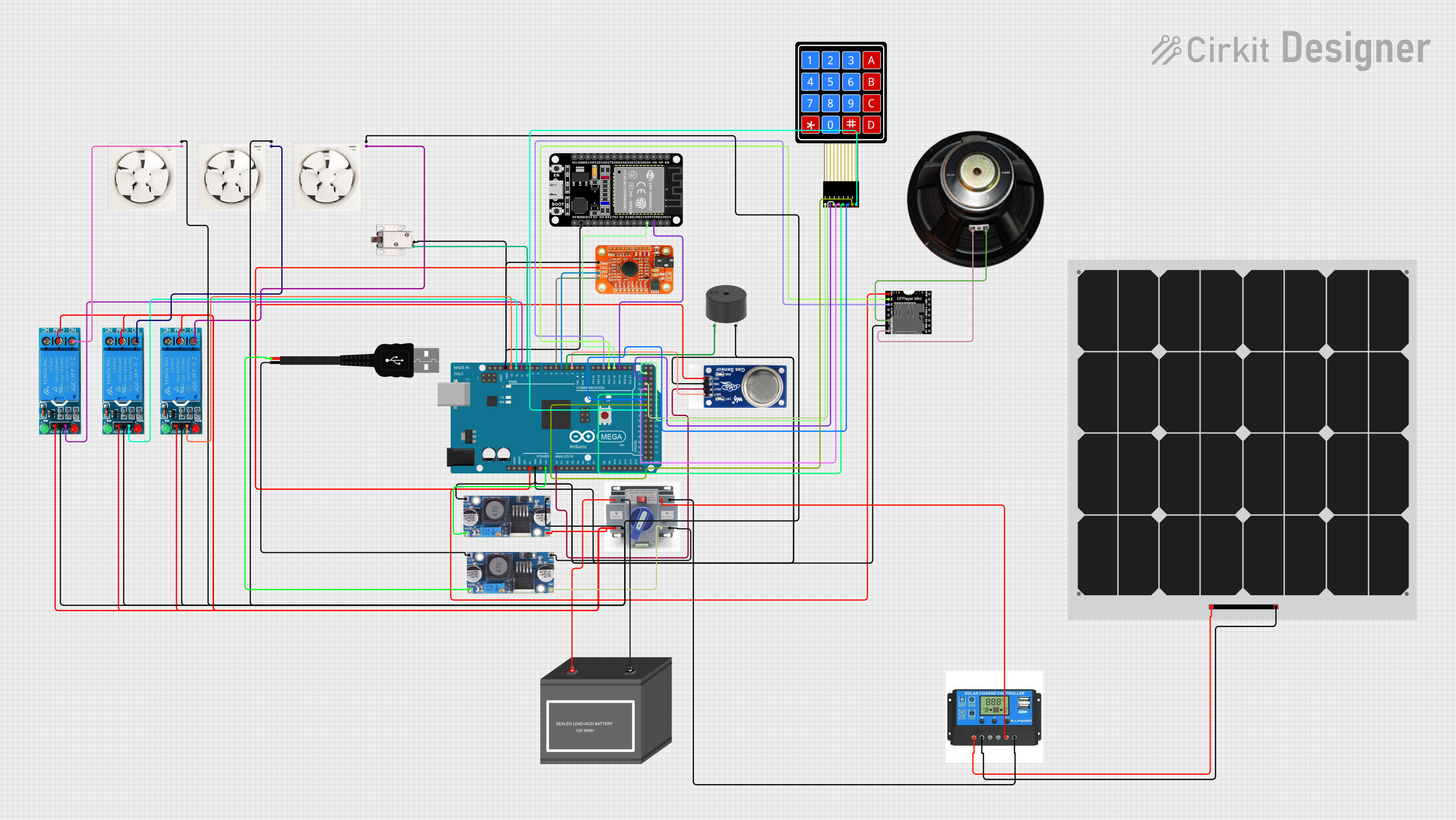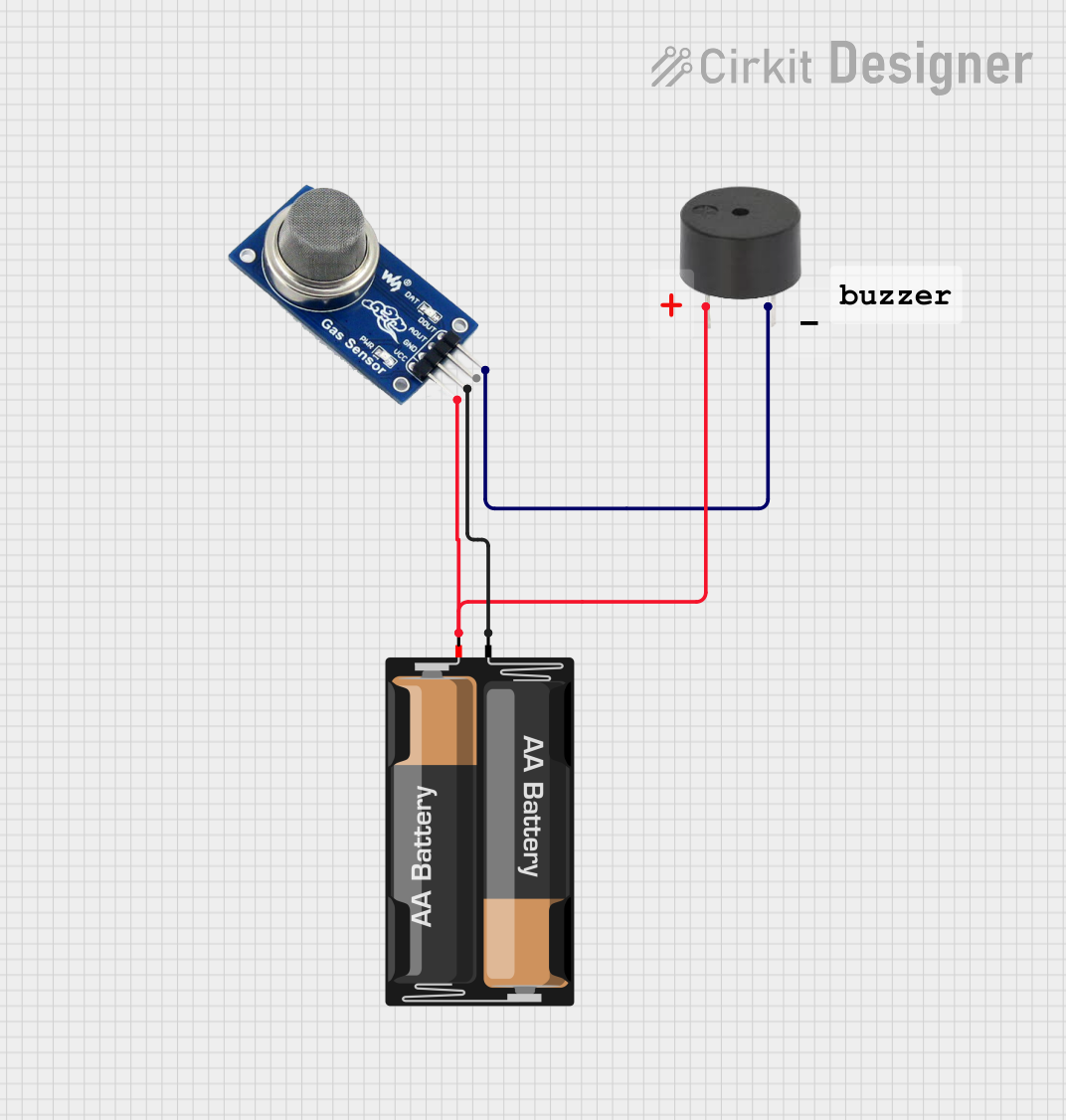
How to Use MQ2: Examples, Pinouts, and Specs

 Design with MQ2 in Cirkit Designer
Design with MQ2 in Cirkit DesignerIntroduction
The MQ2 is a versatile gas sensor designed to detect a variety of gases, including methane, propane, hydrogen, carbon monoxide, and smoke. It operates on the principle of resistive change, where the sensor's resistance varies in the presence of target gases. This change is converted into an analog output signal, which can be easily read by microcontrollers or other electronic systems.
Explore Projects Built with MQ2

 Open Project in Cirkit Designer
Open Project in Cirkit Designer
 Open Project in Cirkit Designer
Open Project in Cirkit Designer
 Open Project in Cirkit Designer
Open Project in Cirkit Designer
 Open Project in Cirkit Designer
Open Project in Cirkit DesignerExplore Projects Built with MQ2

 Open Project in Cirkit Designer
Open Project in Cirkit Designer
 Open Project in Cirkit Designer
Open Project in Cirkit Designer
 Open Project in Cirkit Designer
Open Project in Cirkit Designer
 Open Project in Cirkit Designer
Open Project in Cirkit DesignerCommon Applications
- Gas leak detection in homes and industries
- Smoke detection in fire alarm systems
- Air quality monitoring
- Safety systems in automotive and industrial environments
Technical Specifications
The MQ2 sensor is a compact and reliable device with the following key specifications:
| Parameter | Value |
|---|---|
| Operating Voltage | 5V DC |
| Load Resistance (RL) | Adjustable (typically 4.7kΩ - 10kΩ) |
| Heater Voltage (VH) | 5V ± 0.2V DC or AC |
| Heating Current | < 150mA |
| Detection Range | 200 - 10,000 ppm (parts per million) |
| Preheat Time | ≥ 24 hours for optimal performance |
| Output Signal | Analog voltage |
| Operating Temperature | -20°C to 50°C |
| Humidity Range | 35% - 95% RH |
| Dimensions | 32mm x 20mm x 22mm (approx.) |
Pin Configuration and Descriptions
The MQ2 sensor typically comes with four pins or terminals. Below is the pinout description:
| Pin | Name | Description |
|---|---|---|
| 1 | VCC | Power supply pin (5V DC) |
| 2 | GND | Ground pin |
| 3 | AOUT | Analog output pin (provides voltage proportional to gas concentration) |
| 4 | DOUT | Digital output pin (high/low signal based on threshold) |
Usage Instructions
How to Use the MQ2 in a Circuit
- Power the Sensor: Connect the VCC pin to a 5V DC power source and the GND pin to ground.
- Read the Output:
- Use the AOUT pin to read the analog signal. This pin outputs a voltage proportional to the gas concentration.
- Alternatively, use the DOUT pin for a digital high/low signal. Adjust the onboard potentiometer to set the threshold for the digital output.
- Preheat the Sensor: Allow the sensor to preheat for at least 24 hours before taking accurate measurements. This ensures the internal heater stabilizes.
- Connect to a Microcontroller: The MQ2 can be interfaced with microcontrollers like Arduino UNO to process the output signal.
Important Considerations and Best Practices
- Preheating: Always preheat the sensor for the recommended duration to ensure accurate readings.
- Placement: Install the sensor in a well-ventilated area to avoid saturation or false readings.
- Calibration: Calibrate the sensor in a controlled environment with known gas concentrations for precise measurements.
- Power Supply: Use a stable 5V power source to avoid fluctuations in the output signal.
- Avoid Contamination: Keep the sensor away from water, dust, and corrosive gases to maintain its longevity.
Example: Connecting MQ2 to Arduino UNO
Below is an example of how to connect and read data from the MQ2 sensor using an Arduino UNO:
Circuit Connections
- Connect the MQ2's VCC pin to the Arduino's 5V pin.
- Connect the GND pin to the Arduino's GND pin.
- Connect the AOUT pin to the Arduino's A0 analog input pin.
Arduino Code
// MQ2 Gas Sensor Example with Arduino UNO
// Reads analog output from MQ2 and prints gas concentration to Serial Monitor
const int MQ2_AOUT = A0; // Analog pin connected to MQ2 AOUT
int sensorValue = 0; // Variable to store sensor reading
void setup() {
Serial.begin(9600); // Initialize serial communication at 9600 baud
Serial.println("MQ2 Gas Sensor Test");
}
void loop() {
sensorValue = analogRead(MQ2_AOUT); // Read analog value from MQ2
float voltage = sensorValue * (5.0 / 1023.0); // Convert to voltage
// Print sensor value and voltage to Serial Monitor
Serial.print("Sensor Value: ");
Serial.print(sensorValue);
Serial.print(" | Voltage: ");
Serial.print(voltage);
Serial.println(" V");
delay(1000); // Wait 1 second before next reading
}
Troubleshooting and FAQs
Common Issues and Solutions
No Output Signal:
- Ensure the sensor is properly powered (5V to VCC and GND connected).
- Check for loose or incorrect wiring.
- Verify that the sensor has been preheated for at least 24 hours.
Inaccurate Readings:
- Calibrate the sensor in a controlled environment with known gas concentrations.
- Ensure the sensor is not exposed to extreme temperatures or humidity.
Fluctuating Output:
- Use a stable power supply to avoid voltage fluctuations.
- Place the sensor in a stable environment, away from strong air currents.
Digital Output Not Triggering:
- Adjust the onboard potentiometer to set the correct threshold for the DOUT pin.
- Verify that the target gas concentration exceeds the set threshold.
FAQs
Q: Can the MQ2 detect multiple gases simultaneously?
A: Yes, the MQ2 can detect multiple gases, but it does not differentiate between them. The output signal represents the combined concentration of all detectable gases.
Q: How long does the MQ2 sensor last?
A: The MQ2 sensor typically lasts for 2-3 years under normal operating conditions. Proper care and maintenance can extend its lifespan.
Q: Can I use the MQ2 with a 3.3V microcontroller?
A: The MQ2 is designed for 5V operation. If using a 3.3V microcontroller, you will need a level shifter or a separate 5V power supply for the sensor.
Q: Is the MQ2 suitable for outdoor use?
A: The MQ2 is not designed for outdoor use as it is sensitive to humidity, temperature, and environmental contaminants. Use it in controlled indoor environments for best results.